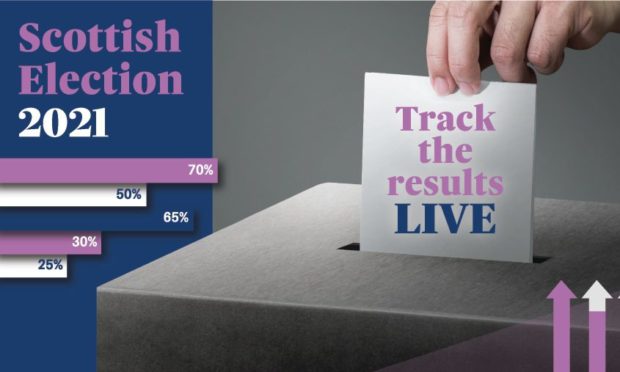People have gone to the polls to make their voices heard on who they would like to represent their area in the Scottish Parliament.
First established in 1999, this is the sixth round of elections that have been held for the Scottish Parliament, based in Holyrood, Edinburgh.
A total of 129 parliamentary seats will be declared throughout the day on Friday and Saturday.
Usually election counts are held overnight, but due to Covid-19, it has been decided to count during the day on the two dates instead.
During polling, two votes are made by each person as our parliament uses an electoral system called the “Additional Member System.” One vote chooses a person for the constituency vote, and the other selecting a party, for the region, or list, vote.
This page will be updated live during the count when constituency and region seats are called.
Constituency seats
There are 73 constituencies in Scotland, with each electing one MSP. These will be called throughout the day on Friday and Saturday as counting finishes for each constituency.
A first-past-the-post system is used for electing an MSP in the constituency vote.
In the map below, you can follow the results as they are called, as well as see the percentage of vote each party received in each constituency from 1999 to 2016.
Boundary changes were made for the 2011 Scottish Parliamentary Elections, resulting in changes to some of the constituencies.
Where this has happened, the closest boundary seat for 2019-2007 has been used for comparison where possible, however some constituencies are now made up of several old areas joined together, and will only show 2016 and 2021 results.
To use the map, click on a constituency you are interested in for further information.
Regional seats
There are a total of 56 “list” seats, also known as regional seats.
List seats cover a specific region of Scotland, and are split into Central Scotland, Glasgow, Highlands and Islands, Lothian, Mid Scotland and Fife, North East Scotland, South Scotland and West Scotland.
Seven MSPs are to be elected for each of the regions, and they are allocated once constituency votes are counted.
All seven seats in a region will be announced at the same time.
The spread of regional seats are intended to help make the parliament more proportional.
Use the chart below to see the regional seats for 2021 as they are called, as well as a comparison with the 2016 allocation.
How many seats does each party have?
These charts show the number of seats held by each of the parties, and will be updated as the seats are declared.
The below diagram shows the flow in seats between 2016 and 2021. As the seats are called during the two days, it will reflect the parties where MSPs are coming from.
Scottish Election 2021 LIVE: Keep up-to-date with all the latest as results are declared










